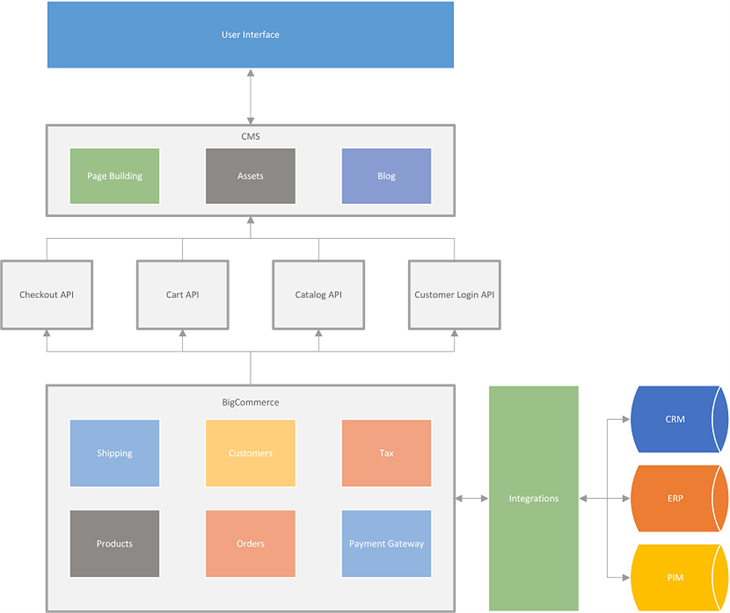In my last blog, we explored what the different models of E-Commerce were and I posed the following question: Is “Headless Commerce” just a fad, or is it indeed the future? Now that we know what headless commerce is and that it is not just a fad, let us dive right into something I’m super excited to discuss; BigCommerce’s API-driven Commerce-as-a-Service.
So, what exactly is Commerce-as-a-Service? CaaS is BigCommerce’s response to the ever-changing E-Commerce industry and their desire to empower storeowners to bridge content and commerce via a “headless” (technically can be defined as ‘decoupled’) solution. This allows storeowners to utilize BigCommerce as the cash register and commerce engine and deliver API-driven experiences to a CMS, application, custom front-end, etc.
The advantages of using this CaaS solution is that it caters to the strengths of each platform. Leave BigCommerce for business logic and transactions. Leave your choice of CMS or front-end experience for UX and low-/no-code design. This is truly the best of both worlds! It would be like if Batman and Iron Man had a crossover story. That is how cool this is.
BigCommerce, for all of its greatness, does have some limitations in robust content management. It’s no mystery that stuff like page building, assets, and blogs are done much better in traditional content-driven CMS such as WordPress and Drupal to name a couple. Knowing that content is king, BigCommerce isn’t going to pretend it’s something it isn’t – which is why their CaaS tool plugs into these existing content systems to deliver agile and flexible digital commerce while enabling sleek checkouts that come with enterprise grade security.
I know what you might be asking at this point. But… why?

Why BigCommerce? Why BigCommerce when you can plug and play a “native” or semi-native commerce tool onto your already existing CMS platform? The answer is simple - because of the robust server-side APIs, standalone checkout options, and customer APIs. BigCommerce offers up their sophisticated platform APIs to extend and connect to any environment. One of the core reasons why I love working on and with BigCommerce is their extensive APIs and the ability to make API requests in the context of the storefront or server-to-server.
In regards to the standalone checkout options, you can enjoy and utilize BigCommerce’s best-in-class uptime and PCI compliance from their checkout process without compromising anything on your front-end. BigCommerce maintains the checkout, so this will give you, as the storeowner, a secure checkout experience, lessening any overall risks and giving you peace of mind.
Finally, the customer APIs – on the rudimentary level, BigCommerce provides accounts, logins, and the storage of payment information for your customers. On a more technical level, access to the customer integration data and the ability to personalize a unique customer experience for your shoppers are just some of the awesomeness of the customer API.
Another important aspect of the CaaS solution is that it permits multiple stores on multiple platforms – so storeowners can simultaneously run multiple stores across various fronts – all from one central catalog. Thus, when you make a change to your catalog, not only would it update on your digital storefront, this data is also synced to any other third-party sales channels, such as Amazon and eBay, if you were selling via omni-channel.
With all of the positives, there are a few downsides to note. With great power, comes great responsibility. Successfully running a CaaS solution, you do need a CMS that can accept outside information with high performance. We know that BigCommerce can expose all relevant data with high performance – but that would all be a moot point if you were handcuffed to the limitations of your CMS or front-end experience - or worse, it had nightmarish performance issues. So you do need a strong front-end to handle everything successfully.
However, if you do have everything required here, then the world is your oyster in terms of scalability, user-experience, and customization.
Finally, my words might just be a heap of mumbo jumbo to some, so here is something visual my colleague Michael Vasta created to explain how BigCommerce’s CaaS works:
